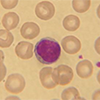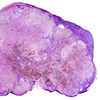Suitable Specimen Types
EDTA Plasma SerumAldosterone (Aldo)
Specimen Volume
1.0 mL blood. Minimum = 250uL sample.Specimen Transport
Not applicable
Sample Preparation
Turnaround Time
10 working daysSample Processing In Laboratory
Store frozenSample Stability
-20 ºC
General Information
Primary hyperaldosteronism is caused by the overproduction of aldosterone by the cortex of the adrenal glands, (due to the presence of an adrenal adenoma or adrenal hyperplasia). The high aldosterone level increases the reabsorption of sodium and the loss of potassium by the kidneys, resulting in an electrolyte imbalance. Symptoms are not typically present, although muscle weakness can occur if potassium levels are very low.
The presence of hypokalaemia in a person with hypertension suggests the need to look for hyperaldosteronism.
Secondary hyperaldosteronism, which is more common, is a result of anything that increases renin levels, such as decreased blood flow to the kidneys, decreased blood pressure, or low sodium levels. The most important cause is narrowing of the blood vessels that supply the kidney, termed renal artery stenosis. Secondary hyperaldosteronism may also be seen with congestive heart failure, cirrhosis, kidney disease, and toxaemia of pregnancy.
Hypoaldosteronism (decreased production) usually occurs as part of adrenal insufficiency; it causes dehydration, low blood pressure, hyperkalaemia and hyponatraemia.
Patient Preparation
Ideally the laboratory should be provided with a full drug history and the patients sodium and potassium status. Advice with regard to drug therapy should be sought from the relevant Endocrinologist. The measurement of aldosterone is best carried out at 8 am following at least 4 hours recumbence. This is because the change in blood pressure upon standing causes release of renin and therefore an increase in aldosterone. In practice most samples for aldosterone are taken randomly.
Notes
Patient should preferably be off diuretic therapy and volume replete. The sample does not need to be taken whilst the patient is fasting.
A full list of drug interactions can be found here http://emedicine.medscape.com/article/920713-workup
Patient should be on a normal diet, on a low sodium diet the aldosterone could be 2-5 times that of normal.
When sent from other hospitals serum/plasma should be sent frozen but if it arrives thawed it may still be able to be processed depending on the timeframe for delivery.
Fludrocortisone does not cross-react in the assay.
Aldosterone levels fall to very low levels with severe illness, so testing should not be done at times when a person is very ill. Stress and strenuous exercise can temporarily increase aldosterone results.
The general investigation of the aldosterone:renin axis sometimes involves the use of posture studies.
For recumbant samples, the patient should be lying down for at least 15 minutes; for standing samples, patients should remain upright for at 15 minutes.
To convert from conventional units to SI units, multiply SA (ng/dL)×27.743=pmol/L.
Reference Range
Standing/random samples: <750pmol/L
Recumbent (minimum of 4 hours): <375pmol/L
Source of Reference Range
In-house validationSpecifications
-
EQA Status:
UK NEQAS for Steroid Hormones scheme
- EQAS Scheme: Yes







